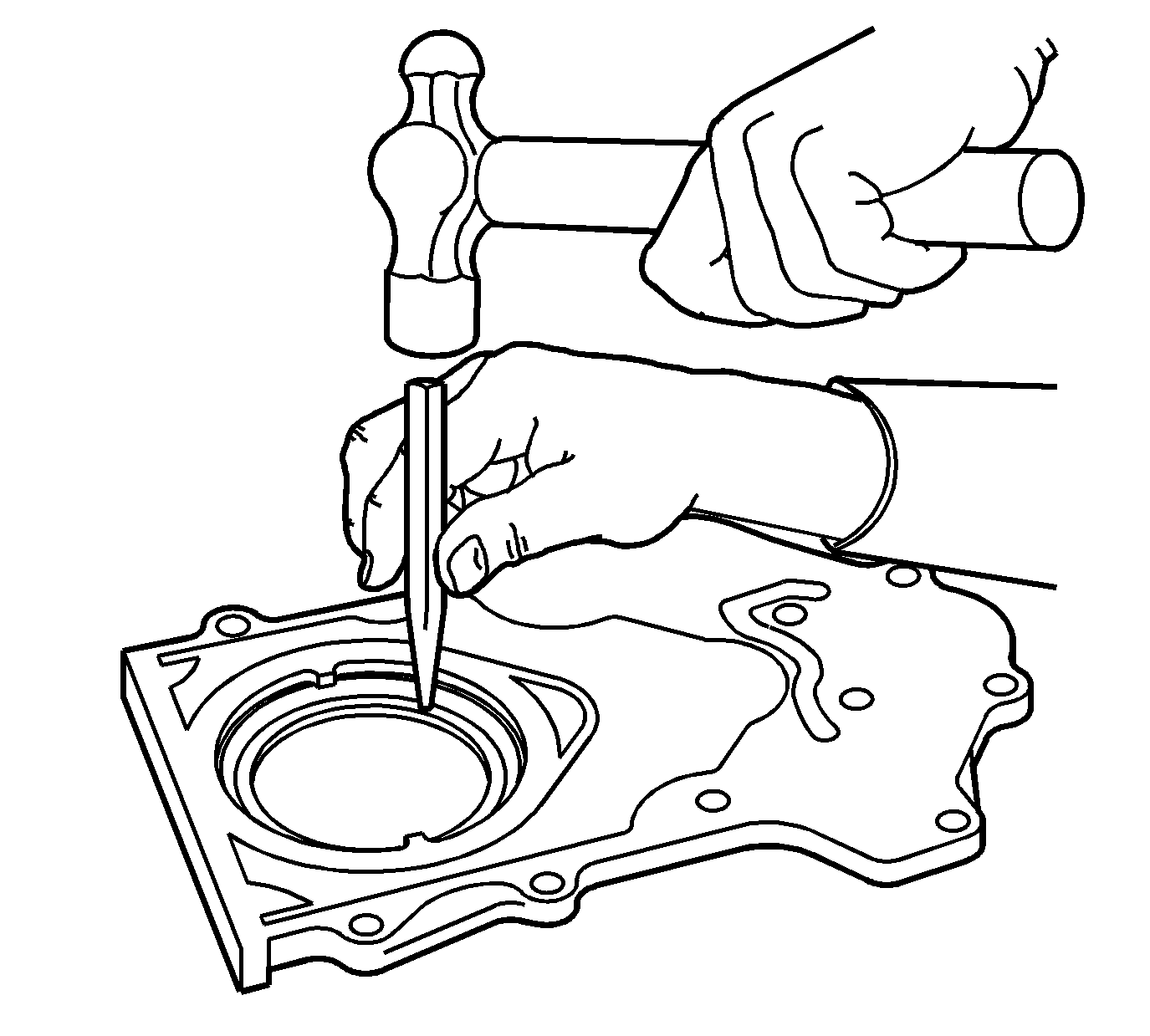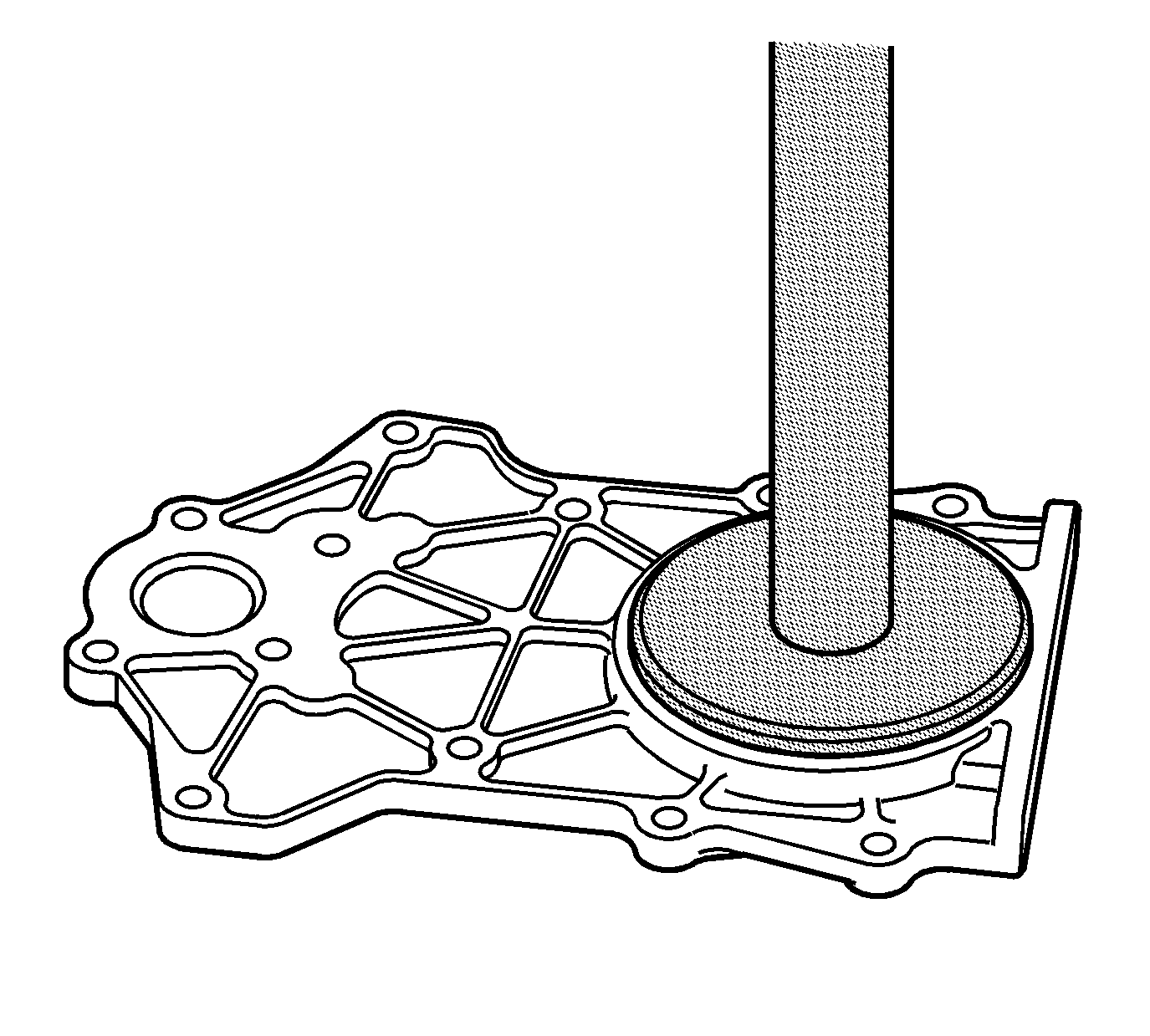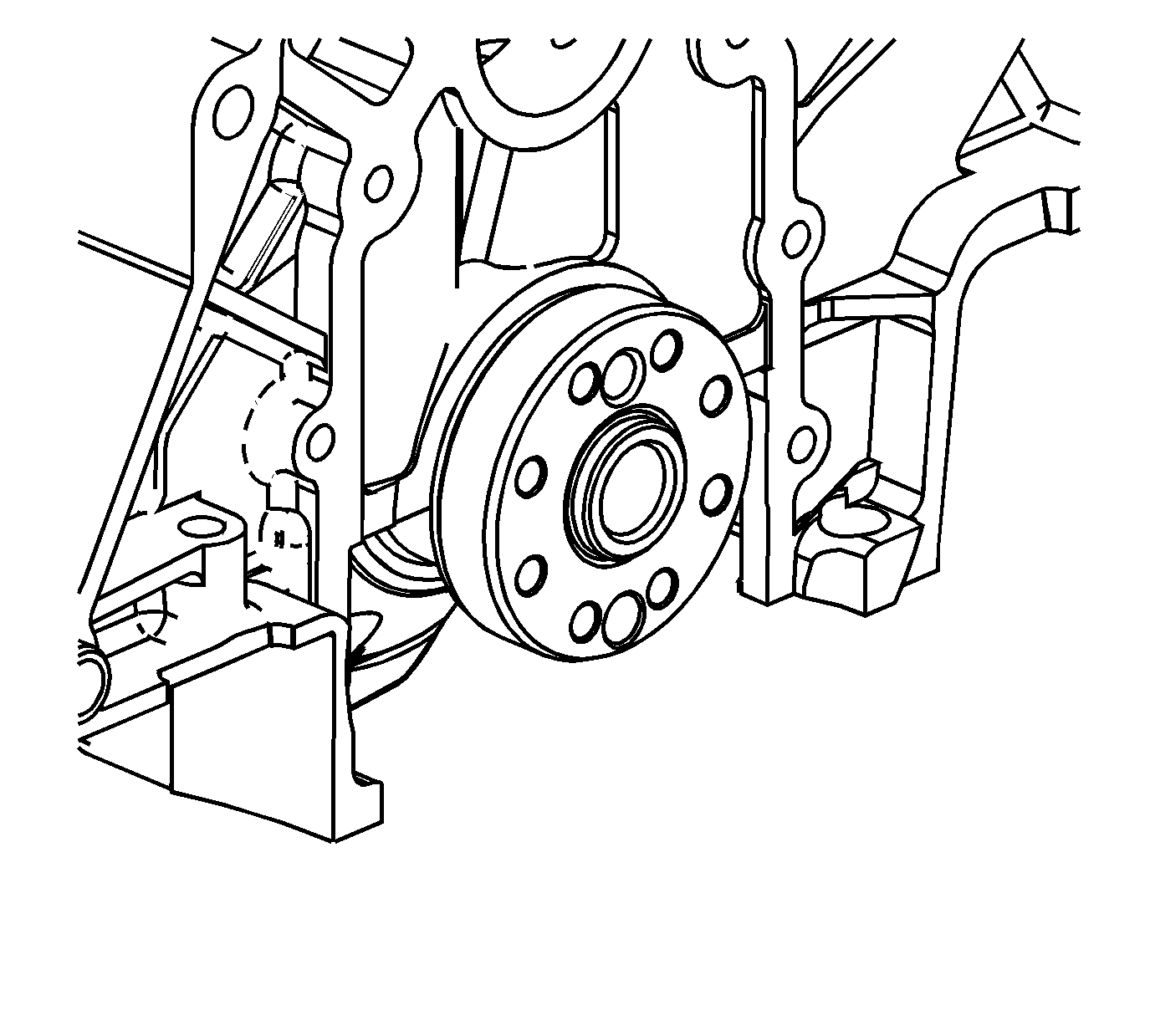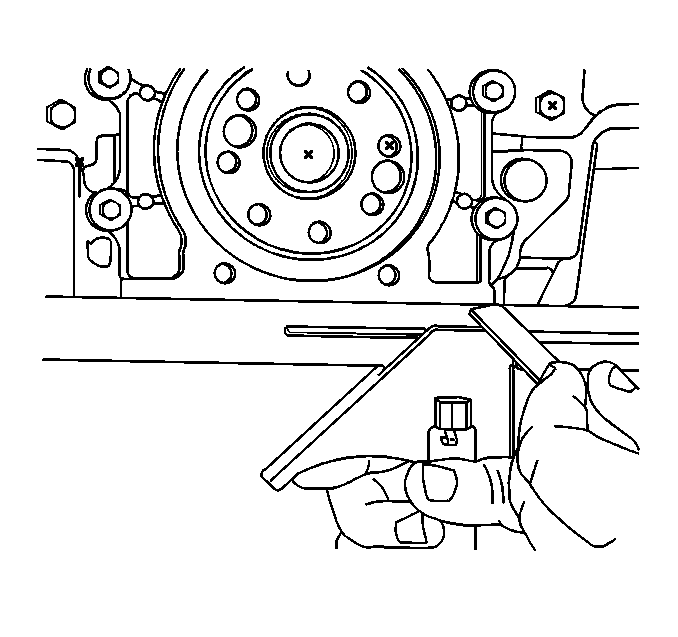Special Tools
| • | EN-47623 Rear Main Seal Installer |
| • | J 8092 Drive Handle |
| • | J 45059 Torque Angle Meter |
Removal Procedure
- Drain the cooling system. Refer to Cooling System Draining and Filling .
- Remove the engine flywheel. Refer to Engine Flywheel Replacement .
- Remove the oil pan. Refer to Oil Pan Replacement .
- Remove the crankshaft rear oil seal housing bolts.
- Remove the crankshaft rear oil seal housing and gasket.
- Place the crankshaft rear oil seal housing face down on a clean surface and support with blocks of wood.
- Use a suitable driving tool and hammer and lightly tap around the outer edge of the seal to remove it.
- Inspect the crankshaft for nicks or burrs on the surface that contacts the seal.
- Repair or replace the crankshaft, if necessary.

Important: Ensure not to damage the crankshaft outside diameter surface with any tool.

Installation Procedure
Notice: Do not apply or use any oil lubrication on the crankshaft rear oil seal, or the seal installer. Do not touch the sealing lip of the oil seal once the protective sleeve is removed. Doing so will damage/deform the seal.
Notice: Clean the crankshaft sealing surface with a clean, lint free towel. Inspect lead-in edge of crankshaft for burrs/sharp edges that could damage the rear main oil seal. Remove burrs/sharp edges with crocus cloth before proceeding.
- Clean and inspect the crankshaft rear oil seal housing making sure it is free of any foreign material.
- With all bolts removed from the housing, place it face up on a flat clean surface.
- Carefully remove the protection sleeve from the NEW rear oil seal.
- Install the seal onto EN-47623 by placing the seal on an angle and using a twisting motion until it is fully seated.
- Place EN-47623 along with J 8092 onto the housing as shown and apply a constant downward force until the seal is fully seated.
- Clean the crankshaft sealing surface with a clean, lint free towel. Inspect the crankshaft sealing surface and leading edge of the crankshaft for burrs/sharp edges that could damage the rear main oil seal. Remove any burrs or sharp edges with crocus cloth prior to proceeding.
- Install a NEW crankshaft rear oil seal housing gasket and the housing onto the engine.
- Install the crankshaft rear oil seal housing bolts finger tight.
- Place a straight edge on the engine block oil pan flange and the crankshaft rear oil seal housing flange. Use a feeler gage to ensure there is no more than 0.10 mm (0.004 in) step on each side. If necessary, gently rotate the crankshaft rear oil seal housing to make the step equal on each side.
- Tighten the crankshaft rear oil seal housing bolts.
- Recheck the step height on each side to ensure the crankshaft rear oil seal housing did not move. If the step height is beyond specification, reinstall the crankshaft rear oil seal housing and measure the step again. Replace the crankshaft rear oil seal housing if the clearance is still beyond specification.
- Install the oil pan. Refer to Oil Pan Replacement .
- Install the engine flywheel. Refer to Engine Flywheel Replacement .
- Fill the cooling system. Refer to Cooling System Draining and Filling .



Notice: Do not use a sealant or adhesive when installing this component. Use of a sealant or adhesive can cause improper sealing. A component that is not sealed properly can leak leading to extensive engine damage.
Important: Always install a NEW crankshaft rear oil seal housing gasket. This gasket may be installed backward. Install the gasket ensuring that all oil passage openings and gasket openings are in alignment.
Important: The plastic inserts found in the rear oil seal housing retaining bolts are used to aid production assembly only. The inserts are not required for service.

Notice: Refer to Fastener Notice in the Preface section.
Tighten
Tighten the bolts to 15 N·m (11 lb ft) plus an additional 50 degrees using
J 45059
.
